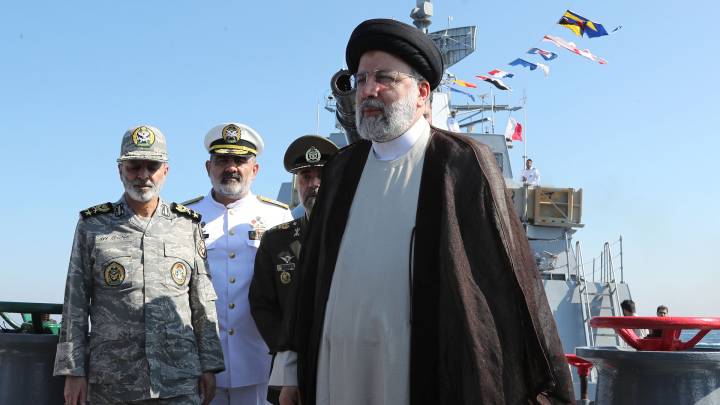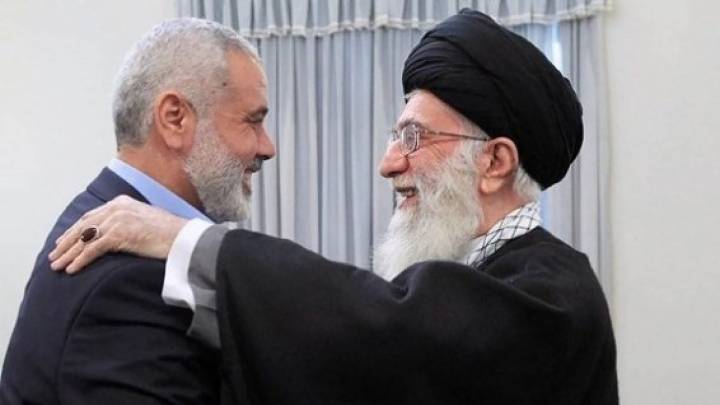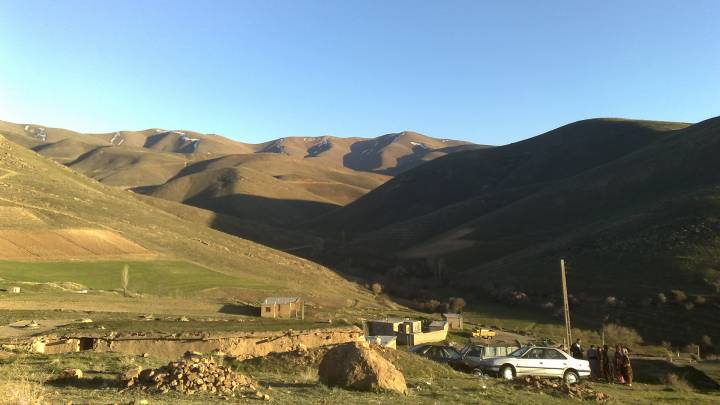How the protest movement has fundamentally changed Iranian politics in at least five major ways – and what’s next for the Islamic Republic.
As recent protests have calmed down, and fewer images of street protests emerge from Iran, Ali Khamenei is expected to celebrate the 44th anniversary of the Islamic Revolution with a mass pardon. Such performed leniency is as common as it is symbolic: It is unlikely any of the more political prisoners will be among those pardoned, many who will emerge from a prolonged detainment over the last five months of mass protests have likely never participated in protests, being preventively incarcerated. Rather than signal a policy shift, the pardon shows that Khamenei perceived the immediate threat of protests as low, but is aware that without some concessions, protests will flare up once again.
44 years after the last Shah of Persia resigned, Iran’s ruler finds himself in a political isolation created by himself and from which it will be increasingly difficult to maneuver out of. One of the reasons the Islamic Republic withstood the most recent protests is its centralization around Khamenei. By marginalizing most independent power centers within the nezam, Iran’s political insiders, he greatly reduced the risk of anyone from within challenging his rule. Yet, the protests exposed the downside of this increased survivability of the political system: It’s incapacity to respond to mass challenges with anything but violence. Already, the protest movement emerging after the death of Jina Mahsa Amini while in custody of Iran’s morality police has changed Iranian politics fundamentally in at least five major ways.
First, the protests showed the potential of mass movements without leaders. Decades of repression, and a brutal crackdown following the Green Movement in 2009, left Iranian civil society with few figures capable of mobilizing and uniting larger numbers of people. While the regime assumed this would prevent mass protests, it did not: Both in 2017 and 2019, mass protests emerged in reaction to unpopular governmental policies. And in 2022, protests looked a lot broader in geographic scope, sociodemographic composition, and coordinated on a smaller scale.
Already, this presents a major challenge to a political system prepared to rely on repression more than cooptation moving forward: If there is no centralized leadership, there is no one to pressure or negotiate with, and policing every single group of small localized protesters requires a lot of capacity. Furthermore, the reaction to violence exposed very clearly the risks of such an approach: Zahedan’s “Bloody Friday”, when over 80 civilians were killed on one day, did not end protests but rather created a hotbed of political activity in a province which had rarely challenged the regime before, with protests even continuing today after many others have quelled down. This is a puzzle that the regime will try to solve, but which is does not have a good solution to yet.
Slogans and demands are directed at Khamenei himself rather than the current president Ebrahim Raisi
Secondly, Iranian politics can hardly continue as it did before 2022. While Iranians had an idea that the current government is deeply unpopular, having been elected by 40 percent of the electorate according to the official data, protests showed how widespread dissatisfaction is. With masses of women taking off the veil, these previously small acts of resistance turned into a mass movement. If they continue to mobilize, they have the potential to render morality policing as a regime practice redundant.
After all, how many police units would be necessary to force a female population of 42 million, if even a mere majority decides to take off the veil at once? By turning unveiling into a mass practice of civil disobedience, this laid the groundwork for such a shift in Iranian politics. While the regime can hardly allow unveiling officially, having turned the issue into a core policy issue, it might have to tolerate it and focus on policing some public and religious places – not due to a change in opinion, but due to limited capacities.
The regime had, thirdly, finalized its transformation into a Khamenei-led autocracy without a legitimized opposition. This is evident in how protesters perceive the status quo, e.g. when slogans and demands are directed at Khamenei himself rather than the current president Ebrahim Raisi, clearly assigning one responsibility over the other. This has been complemented by how moderate forces such as previous the president Hassan Rouhani or potential presidential contender Ali Larijani have been sidelined, while Reformists have all but disappeared from the political landscape. Until 2021, they had been split between those who, like Fatemeh Rafsanjani, called for an electoral boycott and mass protests, and those who, like most of its elites, supported a Rouhani-led coalition. The closed elections of 2020 and 2021 disillusioned remaining believers in reforms through electoral coalitions.
It is no surprise then, that in 2022, both former president Mohammad Khatami and former presidential candidate Mir-Hossein Mousavi joined calls for reforms and spoke out in support of mass protests. Both politicians have been under house arrest for decades, rarely speaking out publicly against Khamenei and either supporting the regime or voicing veiled criticism. Mousavi calling the current system “unsustainable” and calling for a new constitution signifies a major departure from the role Reformism previously played in Iranian politics.
Recent protests highlighted the importance of ethnic and religious minorities as communities which can initiate and maintain mobilization despite repression
It was certainly perceived as such by conservatives. In a newspaper affiliated with the IRGC, they were quickly accused of seeking to topple the Iranian regime. While they are likely hoping to play a role should Khamenei decide to allow changes, the immediate outcome is a system where Reformism, as a political project, is dead, and the main political trajectories are a continuation of the current order under Khamenei or resistance to it through revolutionary practices.
As a side effect, this places huge weight on Khamenei’s succession. The last time, after Khomeini’s death in 1989, major power players like Ali Akbar Hashemi Rafsanjani played a role in determining his successor and allowing for a smooth transition. With Khamenei’s allies reduced to his inner circle, no major power centers left and his popular support at an all-time low, it is unlikely a similarly smooth process will ensue. Those whose careers depend on Khamenei are likely betting on his longevity, as their fortunes would seem less than certain under any successor who might emerge.
Fourth, the recent protests highlighted the importance of ethnic and religious minorities as communities which can initiate and maintain mobilization despite repression. Movlavi Abdolhamid Ismaeelzahi, until recently, seemed like an unlikely leader for any anti-regime protest. Yet the Sunni cleric, once allied to president Raisi, shifted gears and has become a major critic of the current system, calling for an end to state violence and for a referendum well before Reformists did. Despite intimidation campaigns against Baloch actors, protests continue even today – and it seems they will play a major role in whatever political system will follow, be it a continuation of the Islamic Republic or a post-revolutionary order.
Similarly, Kurds in Iran’s West, have been sustaining protests even in the face of a highly militarized state response. Jina, who was forced to adopt the Persian name Mahsa, was born here, in Saqqez. Mass protests began in her hometown and spread to other parts of Iran, along with the Kurdish slogan “Jin, Jiyan, Azadi”, translated into Persian as “Zan, Zendegi, Azadi”. Iranian civil society had long been dominated by urban, middle class, Persian actors, with few connections to Kurds, who were dealing with a much more militarized state, and Balochs, who seemed disconnected from most protests against the regime.
How long can repression delay political change before the price to pay is too high?
This new unity in grief over state violence presents a challenge for a government which long operated under the assumption that mass protests were an issue of its urban centers, and that political grievances in its periphery would take a more ethnic character, easily disconnected from other actors and struggles. Their apparent capacity to link grievances to those of heterogenous ethnic and religious groups challenges the Iranian government to either pacify conflicts in its periphery, or to find new ways to play out its multiple constituents against one another.
Finally, the diaspora seems less capable than ever to take leadership over protests within Iran. Five months into what seems like the biggest to challenge to the Islamic Republic, no major coalition or actor abroad has emerged who seems capable of organizing and galvanizing opposition to the regime. Instead, as diaspora groups fight over the role of monarchism, leftism, feminism or minority rights, protests in Iran continue. The diaspora played a major role as an amplifier, it highlighted human rights violations and state violence in Iran and kept criticism alive from outside of Iran. But it seems as incapable as ever in creating a united platform to aggregate political demands. Instead, it seems political leadership comes from within Iran, and multiple actors have begun creating loose coalitions, comprising youth groups, labor groups and human rights groups.
The dust has settled for now, but Iranian elites are well aware that in the absence of major changes, grievances will persist and protests are likely to flare up again. Will they increase their repressive capacity, to deal with the next protest wave which will likely be bigger? Or will they make concessions, possibly to pacify conflicts with some groups to reduce the scope of a future protest?
Some might push for a violent escalation, not remembering the political cost even of successful repression. They might do well to remember Syria, where Bashar Al-Assad prevailed against imminent revolution, but at the cost of a country torn apart into at least three areas of control, with about half the population either internally displaced or fleeing abroad. How long can repression delay political change before the price to pay is too high, or before Khamenei’s succession takes place? As Khamenei is celebrating the anniversary of a revolution which swept the likes of him into power, he would do well to remember how unpredictable Iranian revolutions can turn out to be.
Dr. Tareq Sydiq s a research fellow at the Center for Conflict Studies in Marburg and member of the Postcolonial Hierarchies in Peace and Conflict network. He holds a PhD in political science from the University of Marburg where his doctoral research explored protest movements in Iran along issues of generational conflict, marginalized communities, international entanglements and spatial conditions. His monograph “Autoritäre Interessensaushandlung. Wie Iraner:innen Politik innerhalb autoritärer Rahmenbedingungen gestalten” was recently published by Springer VS.




